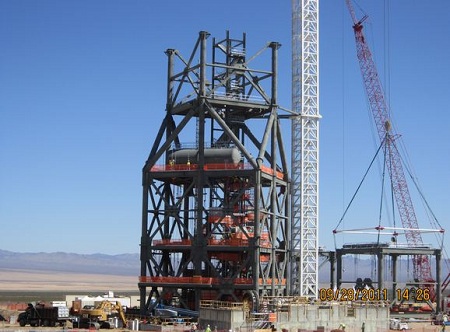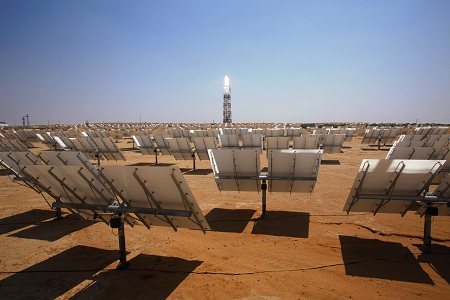The developer BrightSource Energy and the pro-solar nonprofit Vote Solar Initiative have joined forces to promote construction of utility-scale solar power plants in the Southern California desert. The biggest tool in their marketing/PR kit: A new poll [PDF] that shows 75 percent of residents in the “Southern California pan-Desert”—Riverside, San Bernardino, Imperial, Inyo and Kern counties—support building “large-scale solar-powered electric generating systems” in the desert.
The BrightSource/Vote Solar poll reflects long-standing public good will toward renewable energy, but it comes amid signs that developers of industrial-scale power generation in rural areas are sensing push-back. Just in the last few weeks we’ve seen the wind industry aggressively respond to the documentary “Windfall,” which critics have portrayed—and gushed over—as an indictment of big wind. And in Riverside County itself, big solar has gone to court to fight a county-imposed annual fee (or tax, as the developers label it) on utility-scale solar plants.

The folks behind the new poll said it shows they’ve actually got the public on their side.
“The survey demonstrates widespread support for solar development in California’s deserts,” Adam Probolsky, CEO of Probolsky Research, which conducted the survey, said in a statement. “Nearly four out of five people surveyed believe that the California desert is a great resource and should be used to develop solar power projects. We polled just residents living in the desert communities where renewable energy projects are being proposed. Voters understand the impacts and the rewards of utility-scale solar projects in California’s desert communities and they support it.”
In addition to probing the overall level of support for solar development in the desert, the survey asked subjects whether their view of solar might be improved if they knew it would create jobs (yes, most said) or improve air quality (yes again). But one thing the poll didn’t do, noted Chris Clarke, an environmental journalist and activist who lives in the desert, is press people to see how their views might shift if they knew that utility-scale solar development causes significant damage to the fragile desert ecology, as Clarke contends.
“They framed the issues in mom-and-apple-pie terms so that you’d have to be kind of a jerk to disagree with solar development,” Clarke said in a telephone interview. “The deserts do not have a strong constituency, like the Sierra Nevada, or the oceans, or the wetlands. People simply have very little idea what lives in the desert and of the impact we will see from the large-scale industrial development that is unfolding here.”
While big-solar backers say the desert is vast and the developments add up to a tiny portion of it, there’s no denying that the development is on a scale never seen before. As EarthTechling columnist Susan Kraemer put it recently, the Obama administration has approved a “staggering amount of energy” development on public lands since coming into office—16 utility scale power plants in 2010 and 2011 together, including five in Riverside County and three each in Imperial and San Bernardino counties.

Ironically, one of the groups Clarke is affiliated with that is battling big solar in the desert, Solar Done Right, shares much in common with Vote Solar, an organization perhaps more familiar to people for its advocacy of things like net metering than its support for utility-scale solar. Solar Done Right backs the distributed-solar agenda that Vote Solar promotes, as well as efforts to improve energy efficiency. But it sees utility-scale solar as a last resort in the fight against climate change, and even at that says “such projects should be restricted to heavily degraded land that offers no wildlife habitat, agricultural, or similar values, and to technologies that do not deplete scarce water resources.”
According to Vote Solar, the poll was compiled from 1,019 telephone surveys, conducted in both Spanish and English, that took place between December 15-18, 2011, and January 12-15 this year. The survey has a margin of error +/- 3 percentage points.